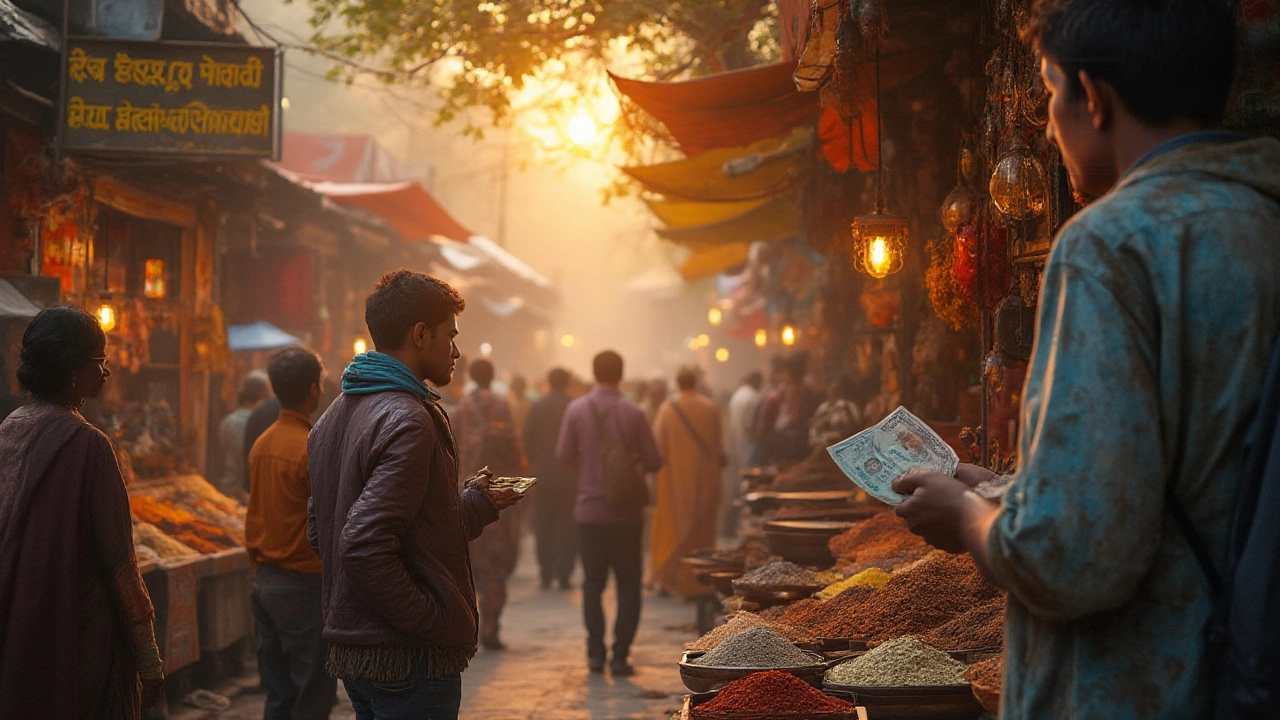Currency Tips India: Save Money and Avoid Scams While Traveling
When you’re traveling in India, a country where cash still rules in most places, from street food stalls to remote temples. Also known as the Indian subcontinent, it’s a place where understanding how money works can mean the difference between a smooth trip and a stressful one. The Indian rupee, the official currency used everywhere from Mumbai’s markets to Himalayan villages. Also known as INR, it’s not something you can easily guess the value of if you’re used to dollars or euros. Most tourists make the mistake of exchanging cash at airports or hotels—where rates are terrible—and then panic when they can’t find an ATM that works. The truth? You don’t need to carry large amounts of cash. You just need to know where to get it, when to use it, and how to avoid being ripped off.
ATMs in India, are widespread in cities and even in many small towns, and they’re your best friend for getting local currency at fair rates. Also known as cash machines, they accept major international cards like Visa and Mastercard, and often give you better deals than any currency exchange booth. Always pick ATMs inside banks or shopping malls—never standalone machines on street corners. These are more likely to be tampered with. And never, ever let someone offer to help you use the machine. That’s a classic scam. The machine will tell you the exchange rate in real time, and it’s usually better than what you’d get at a counter. Also, choose to be charged in Indian rupee, not your home currency. That’s the #1 way to avoid hidden fees.
Another thing most people don’t realize: small shops, rickshaw drivers, and temple vendors rarely give change for large bills. Carry plenty of 100 and 200 rupee notes. Keep your wallet organized. If you’re buying a ₹500 item and hand over a ₹2000 note, you’ll wait 15 minutes while they hunt for change—or worse, they’ll just say they don’t have it and you’ll walk away empty-handed. And if you’re thinking about exchanging money before you land? Don’t. You’ll get a worse rate. Wait until you land and use an ATM. If you must exchange cash, go to a reputable bank branch in the city, not a random kiosk near the Taj Mahal. Tourist traps charge up to 20% extra.
Some travelers bring traveler’s checks. Don’t. They’re nearly impossible to cash outside five-star hotels. Credit cards work in big hotels and chain stores, but if you want to eat at a local dhaba, ride a train, or buy a handmade scarf from a village market, you’ll need cash. And always count your change. Mistakes happen, and sometimes they’re intentional. Keep a small notebook or phone note with the current exchange rate so you can check it yourself. A ₹1000 note is worth about $12, but if you’re not sure, just ask the vendor to show you the rate on their phone—they’ll often do it willingly.
There’s no magic trick to saving money in India—it’s about small, smart habits. Use ATMs. Carry the right denominations. Avoid airport exchanges. Know the real value of a rupee. These aren’t just tips—they’re survival skills. And once you get them right, you’ll notice how much more you can do with less. The post collection below gives you real stories from travelers who’ve been there: how they avoided scams, where to find the best rates, and what to do when things go wrong. You’ll learn what works, what doesn’t, and how to walk away with more memories—and more rupees—than you expected.
